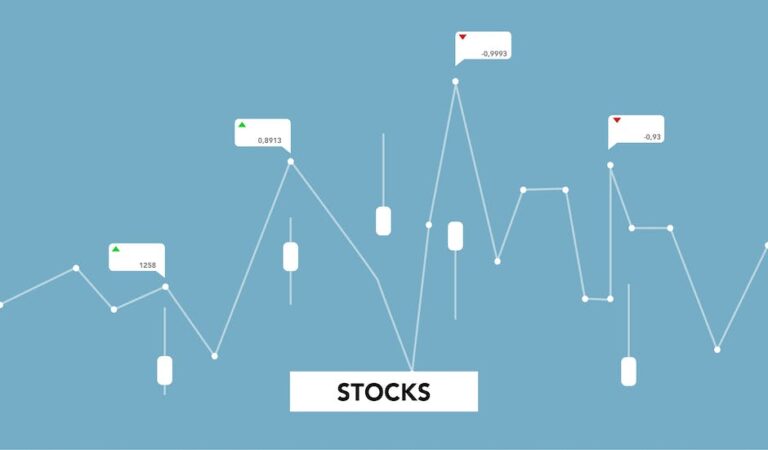5 Key Metrics to Look for When Choosing Stocks

Introduction to Choosing Stocks
Investing in the stock market can be a profitable venture, but it requires careful selection of individual stocks. With so many options available, it can be overwhelming to choose which stocks to invest in. Luckily, there are key metrics that can help you make an informed decision. By understanding these metrics, you can evaluate stocks and make better investment decisions.
Market Capitalization Matters
Market capitalization is one of the first metrics to consider when choosing stocks. Market capitalization is the value of a company based on its stock price and the number of outstanding shares. Large-cap companies have a market capitalization of over $10 billion, mid-cap companies range from $2 billion to $10 billion, and small-cap companies have a market capitalization of less than $2 billion. These distinctions are important because the size of a company can determine its risk level. Large-cap companies are typically more stable and may offer more consistent returns, while small-cap companies are riskier but can offer higher returns if they perform well.
P/E Ratio: A Crucial Metric
The price-to-earnings (P/E) ratio is another critical metric to evaluate when choosing stocks. The P/E ratio is the current stock price divided by the company’s earnings per share (EPS) over the last 12 months. This ratio indicates how expensive a stock is relative to its earnings. A lower P/E ratio can indicate a cheaper stock, while a higher P/E ratio may suggest that the stock is overvalued. However, investors should not rely solely on the P/E ratio as a measure of value because it can be influenced by a company’s growth potential, industry, and risk level. It is crucial to evaluate the P/E ratio in the context of other metrics when choosing stocks.
Understanding Dividend Yield
Another essential metric to consider when choosing stocks is the dividend yield. The dividend yield is the annual dividend payment divided by the current stock price, expressed as a percentage. The dividend yield can be an indicator of how much a company is willing to share its earnings with investors. Companies with a higher dividend yield may be more attractive to investors looking for a steady income stream. However, investors should be aware that a high dividend yield may indicate a struggling company that is unable to reinvest profits into growth. As with other metrics, the dividend yield should be evaluated in the context of other factors when selecting stocks.
Debt-to-Equity Ratio Evaluation
The debt-to-equity (D/E) ratio is a financial metric that helps evaluate a company’s risk level. The D/E ratio is calculated by dividing a company’s total liabilities by its total shareholders’ equity. This metric indicates how much debt a company is using to finance its operations. A higher D/E ratio may indicate that a company is taking on more debt than it can handle, making it riskier for investors. A lower D/E ratio may signify that a company is more stable and financially healthy.
ROI Analysis for Profitability
Return on investment (ROI) is a crucial metric for evaluating the profitability of a particular stock. ROI is calculated by dividing the profit or gain from an investment by the initial investment’s cost. A higher ROI indicates that an investment is more profitable. An investor can compare the ROI of different stocks to identify which investments offer the best returns. It is essential to consider the ROI in the context of other factors, such as the company’s risk level and future growth potential, when choosing stocks.

Price-to-Sales Ratio Importance
The price-to-sales (P/S) ratio compares a company’s stock price to its per-share revenue. The P/S ratio measures how much an investor is willing to pay for a company’s sales and can indicate how well a company is performing in terms of generating sales. A high P/S ratio may indicate that investors believe a company has strong growth potential, while a low P/S ratio can indicate a struggling company with lower sales. However, the P/S ratio should be evaluated in conjunction with other metrics to ensure a comprehensive analysis of the stock.
Using Metrics Together for Best Results
While each of the above metrics is important on its own, a comprehensive analysis of a stock requires using multiple metrics together. Investors can compare companies within the same industry or sector to determine which metrics matter most and which companies are outperforming their peers. For example, for technology companies, evaluating the price-to-earnings growth (PEG) ratio, which incorporates a company’s earnings growth rate into its P/E ratio, may be more relevant than the regular P/E ratio. Additionally, evaluating the historical trends of a particular metric for a company or industry may provide insight into future performance.
Overall, the key to choosing stocks and building a profitable portfolio is to take a holistic approach to analysis and evaluation. By understanding and comparing multiple metrics, investors can make informed decisions based on a range of factors and minimize their risk. While no approach is foolproof, using these metrics in combination can improve investors’ chances of selecting winning stocks. By incorporating these metrics into your analysis process, you can gain the confidence to make more informed and profitable investment decisions.







